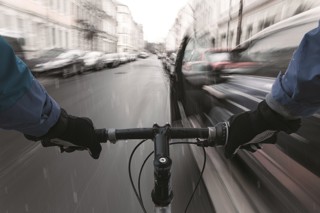Pedestrians, cyclists and those who use public transport should be given priority when new roads are built or upgraded, the National Institute for Health and Care Excellence (NICE) has said.
NICE says planners should develop policies and initiatives to ensure that safe, convenient, inclusive access for pedestrians, cyclists, and people who use public transport is maximised and is prioritised over cars, vans and trucks.
The proposal is made in a draft quality standard for encouraging physical activity within the general population - published today (Friday, January 4) by NICE, which provides national guidance and advice to improve health and social care.
The aim is to get people to be more active in their day-to-day lives by encouraging safe, convenient, active travel that is accessible for everyone, including older people and people with limited mobility.
Professor Gillian Leng, deputy chief executive and director of health and social care at NICE, said: “Getting people to be more physically active by increasing the amount they walk or cycle has the potential to benefit both the individual and the health system.
“As a society we are facing a looming Type 2 diabetes crisis, which is in part caused by people not exercising enough. We need more people to change their lifestyle and to take more exercise.
“People can feel less safe when they walk or cycle compared with when they drive. We’ve got to change this.
“So asking planners to prioritise pedestrians, cyclists and those who use public transport when roads are built or upgraded can ensure they are safe, attractive and designed to encourage people to get out from behind their wheel.”
Joe Irvin, CEO of Living Streets, the UK charity for everyday walking, agrees with NICE. He said: “The better planning that NICE is suggesting is absolutely necessary. Those who are the most vulnerable – children and older people - are currently suffering the most from bad air, unhealthy lifestyles and social isolation.
“It’s time that towns and cities were built for everyone – first and foremost for those on foot. Placing key services like schools, GP surgeries and bus stops within walking distance is vital. More people getting out and walking everyday journeys, such as to work or school, will make us a healthier country.”
According to NHS Digital in 2016, 26% of adults were classified as obese. This was a 15% increased from 1993 but has remained at a similar level since 2010.
RAC head of roads policy Nicholas Lyes said: “While we certainly welcome changes to road design that encourage more people to walk and cycle in towns and cities, the reality is that the use of many roads is inevitably shared between different types of motorised traffic, cyclists and pedestrians – with priority often given to motorised transport in order to keep large numbers of people moving.
“We also shouldn’t forget the vital role motorised transport continues to play in many people’s lives in the UK.
“It remains the case that using a car is the only feasible option for many people, especially if they are commuting or travelling to locations that aren’t served by public transport, or where walking or cycling are not practical alternatives.
“Last year a third of drivers said they were more reliant on their car compared to 12 months earlier, with a significant proportion blaming a deterioration in public transport for this.
“It is worth noting that NICE has previously acknowledged the importance of smooth traffic flow in order to reduce air pollution, so we would hope that this new guidance does not result in local planners building or changing roads which results in more congestion and pollution, rather than less.”






















Login to comment
Comments
No comments have been made yet.